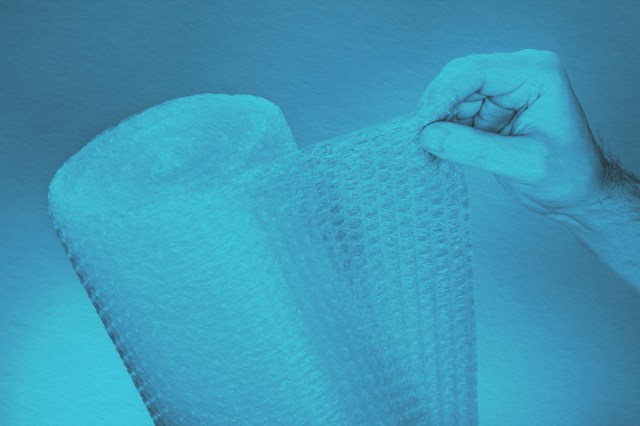
More often than shoppers might realize, everyday products come to be known by the name of the brand most associated with making them. Although a product may have a generic name (e.g., facial tissue), a company name (e.g., Kleenex) has become the more universally accepted term for the product.
This phenomenon is called “genericization,” and it happens when a trademarked (aka brand) name is so widely used that it becomes the product’s identifier. Just look at Band-Aids, the brand name now commonly used to refer to any sort of adhesive bandage, orQ-tips (synonymous with cotton swabs) and, of course, Kleenex. These are some of the more well-known examples, but plenty of other brands have benefited from genericization as well.
“Vaseline” is a brand name for petroleum jelly, a multiuse product found in virtually every drugstore. Today, you might hear “Vaseline” used to refer to petroleum jelly-based products in general, even though competitors such as Aquaphor serve the same purpose. So why has “Vaseline” become the preferred term? The answer is simply that it’s been around the longest: Vaseline became the first commercial petroleum jelly 150 years ago, and is now the most popular and enduring manufacturer of the stuff.
“Styrofoam” is the brand name of a polystyrene foam product created by the Dow Chemical Company in 1941. The name is often used to describe any foam container, especially of the variety used to contain food and beverages, but these containers are actually made of expanded polystyrene foam — not Styrofoam at all. The real Styrofoam is manufactured by Dow for building insulation.
The term “Dumpster” was coined in November 1936, when George Dempster of Knoxville, Tennessee, introduced his line of large garbage bins that could be picked up by a specialized truck. He named the bins after himself, calling them “Dempster Dumpsters.” Thus, “Dumpster” became a genericized term for a mobile garbage receptacle in the United States. In the U.K. and other English-speaking countries, they’re usually called “skip bins.”
“Popsicle” is in fact a trademarked brand name for ice pops, owned by Unilever. The history of the Popsicle begins more than 100 years ago in 1905, when 11-year old Frank Epperson invented flavored ice on a stick and called it an “Epsicle,” using the root of “icicle.” In 1923, Epperson patented the Popsicle (renamed because his children insisted on calling them “Pop’s ’sicles”), which was eventually bought by Unilever; the company soon began creating other product lines such as the Creamsicle and Fudgsicle (which are also trademarked terms).
Most Americans refer to plastic flying discs as “Frisbees,” but that term is actually the brand name of Mattel Toy Manufacturers’ patented disc. Mattel bought the toy in 1994 from Wham-O, which became the first company to produce them in 1957.
The unique name stems from the Frisbie Pie Company in Bridgeport, Connecticut, which supplied pie tins to college campuses, where students would throw the empty tins at each other, yelling “Frisbie!” The nickname for the flying discs caught on, and Wham-O decided to adopt it for their new “Frisbee” toy. The Wham-O designer also developed the concept of “Frisbee golf,” another extension of genericization, because the popular game can be played with any type of flying disc.
“Velcro” received the genericization treatment because “hook-and-loop fastener” doesn’t have quite the same ring to it. Velcro is a trademark owned by the U.K.’s Velcro Companies. The original design was named by combining the words “velvet” and “crochet,” an apt textural description of the product’s two different sides.
In a satirical music video, company “lawyers” beg consumers to stop using the name “Velcro” when referring to other generic products. The “Don’t Say Velcro” campaign attempts to educate consumers on the difference between genuine Velcro products and other similar products in an attempt to prevent further genericization of the brand.
“Jacuzzi” is often treated as a synonymous term for any type of bubbling hot tub. But the word is actually a proprietary name belonging to Jacuzzi — a private company that makes bathtubs, showers, and other similar products. The origins of both the company and its name date to the early 20th century, when two brothers named Valeriano and Francesco Iacuzzi immigrated to the United States from Italy. Upon their arrival, an immigration official mistakenly wrote down their surname as “Jacuzzi,” and it stuck.
The five other Iacuzzi/Jacuzzi siblings eventually made their way to the U.S. as well, including Candido, who invented a hydrotherapy pump in the 1940s. This pump was developed into a product meant for home use, which could turn any normal bathtub into a spa-like experience — and thus the first Jacuzzi-brand tubs were born. The term is trademarked by the company, meaning only hot tubs manufactured by Jacuzzi can accurately be referred to as such.
Anyone who’s ever undergone a serious dental procedure has probably been injected with Novocain, a powerful numbing agent. But Novocain (the original German spelling — it’s spelled “Novocaine” in the United States) is the name of a product rather than a generic drug.
This trademarked term is owned by Hospira, Inc., and is used for a drug known as “procaine hydrochloride.” Novocain specifically was invented by German chemist Alfred Einhorn in 1905 as a replacement for cocaine, which was a popular anesthetic prior to Novocain’s creation. Einhorn chose the name “Novocain” as it combined the Latin nov- (“new”) with the suffix -caine, which was commonly ascribed to alkaloid anesthetics.
In 1957, Marc Chavannes and Al Fielding created a textured plastic intended to be used as wallpaper, which was originally called “Air Cap.” Shortly thereafter, the product was renamed “Bubble Wrap,” which has developed into a widely used genericism today but is actually a trademarked term owned by the Sealed Air Corporation. While similar sheets of plastic containing fun-to-pop bubbles of gas are available on the market from other manufacturers — under generic terms such as “bubble packing” — true Bubble Wrap comes from that specific company.
This may not be a product, per se, but Realtors provide an important paid service to those searching for a new home. However, the term “Realtor” refers to a very specific individual who’s a registered member of the National Association of Realtors (NAR). So while you may receive similar services from a nonregistered real estate agent, it would technically be incorrect to call them a “Realtor.”
Registered Realtors adhere to a strict code of ethics and are authorized to use the term, suggesting you may receive a special level of service that stands out above the rest. The NAR says the preferred way to format the word is “REALTOR” in all caps, as that’s how it’s registered.
The Seeing Eye is an organization based in Morristown, New Jersey, that’s been training dogs to guide visually impaired people since 1929. It was the first guide dog school founded outside Europe and is the oldest extant guide dog school in the world. Because it’s so well known, the term “Seeing Eye dog” has become synonymous with guide dogs in general, especially those trained to assist people who are blind or visually impaired. When you’re speaking generically, however, you should use the term “guide dog” — save “Seeing Eye dog” for pups that have been specifically trained by the Seeing Eye organization.




















